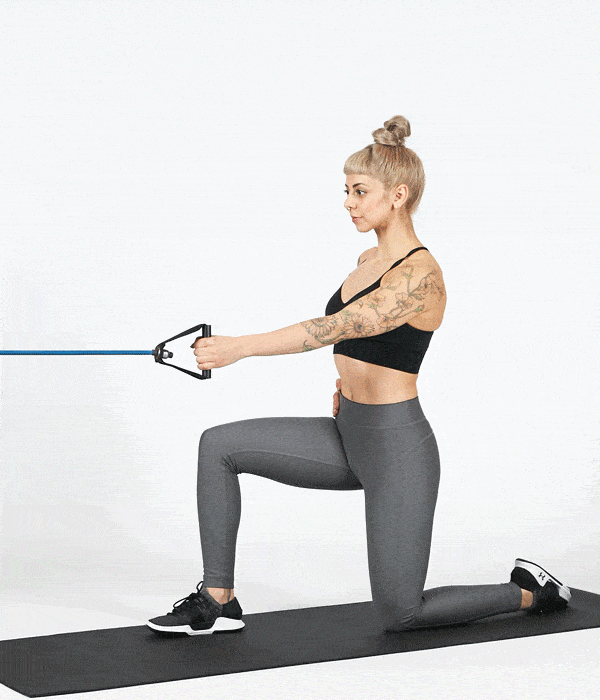At one time, personal trainers were programming crunches left and right. But these days, crunches have fallen out of favor. In fact, many trainers now advise their clients against them.
You may be wondering: why? And, are crunches really worthless?
Well, crunches aren’t necessarily worthless. But they’re also nothing to write home about: “Overall, I’d say they’re better than doing nothing, but they aren’t particularly beneficial for most people compared to other exercise choices,” says exercise physiologist Dean Somerset, a certified strength and conditioning specialist. “I honestly can’t think of a time that I’ve programmed crunches for a client in [my] 15 years as a trainer,” he adds.
GETTING TO KNOW YOUR ABS
To understand why some trainers aren’t impressed by crunches, we need to look at the main function of your ab muscles (the rectus abdominis, transverse abdominis and obliques).
According to Somerset, your abs have four main functions: to flex your spine (as when you bend forward), resist spine extension (so you don’t bend over backward, literally), brace to keep you upright and help you rotate or avoid rotation. If you want your abs to be strong in these functions, you need to prioritize exercises that help you accomplish each function.
As an exercise, crunches aren’t the greatest option because they only strengthen your abs via spinal flexion, “so there’s so much more room for benefit with additional exercises that could take their place,” Somerset says. (Find better exercises below.)
It’s because of this focus on spinal flexion that Meghan Kennihan, a running coach and NASM-certified personal trainer in La Grange, Illinois, doesn’t recommend crunches to her clients at all. As she explains, this repetitive spinal flexion puts stress on the vertebrae in the spine, as well as the discs in between each vertebra. So, if you’re concerned about back pain, crunches could potentially worsen your problem.
If you like crunches then, by all means, feel free to do them. Just be sure to watch your technique; don’t wrench your neck or try to bounce through the reps, Somerset says. Otherwise, you may lessen any benefits and even create some neck pain in the process.
4 AB EXERCISES THAT ARE BETTER THAN CRUNCHES
Skip the crunches and go for one (or all) of the following ab exercises:
PLANK

This classic move trains your ab muscles to maintain a neutral spine position, which helps improve posture, Kennihan says. Plus, the plank activates a lot of different core muscles, including your rectus abdominis, obliques and transverse abdominis.
The move: Lie on your stomach with your forearms and palms flat on the floor. Your elbows should be directly beneath your shoulders and your legs extended. Then, tuck your toes and lift your hips off the floor so your body is in a straight line. Contract your ab muscles to maintain the position for as long as possible.
DEAD BUG

Train your abs to resist spine extension — and challenge your coordination — with the dead bug exercise.
The move: Lie on your back with your knees bent and your feet flat on the floor. To begin, press your lower back into the floor. Then, lift both knees until your shins are parallel to the floor, and extend your arms toward the ceiling. Contract your abs and slowly lower one arm toward the floor alongside your ear while you straighten the opposite leg toward the floor. Only lower your arm and leg as far as you can without letting your lower back peel off the floor. Return to start and repeat with the opposite arm and leg.
HANGING LEG RAISES

According to Somerset, hanging leg raises train your abs with spinal flexion but less stress than crunches.
The move: Grip a pullup bar with your palms facing forward and your legs fully extended. Your feet should be off the floor. Tighten your abs and, keeping your legs as straight as your level of flexibility allows, lift your legs as high as you can. Focus on lifting your legs with control, and don’t allow your back to round. Then, lower your legs slowly. Regress to hanging knee raises if you struggle with the straight-leg version.
1-ARM CABLE OR BANDED ROW

The one-arm cable or banded row helps train your abs to resist rotation, Somerset says. Plus, you’ll strengthen your back.
The move: Find a cable machine or anchor a resistance band at chest-height. Facing the anchor, hold the handle or the end of the band with one hand using a neutral grip. If using a band, step back until you feel tension. Then, brace your core and pull the handle or band toward your ribcage so your elbow points behind you. Squeeze your shoulder blade at the top of movement before straightening your arm to return to the starting position. Perform all reps on one side before switching to the other. To make the move harder, increase the weight, step further away from the anchor point or use a thicker band.




